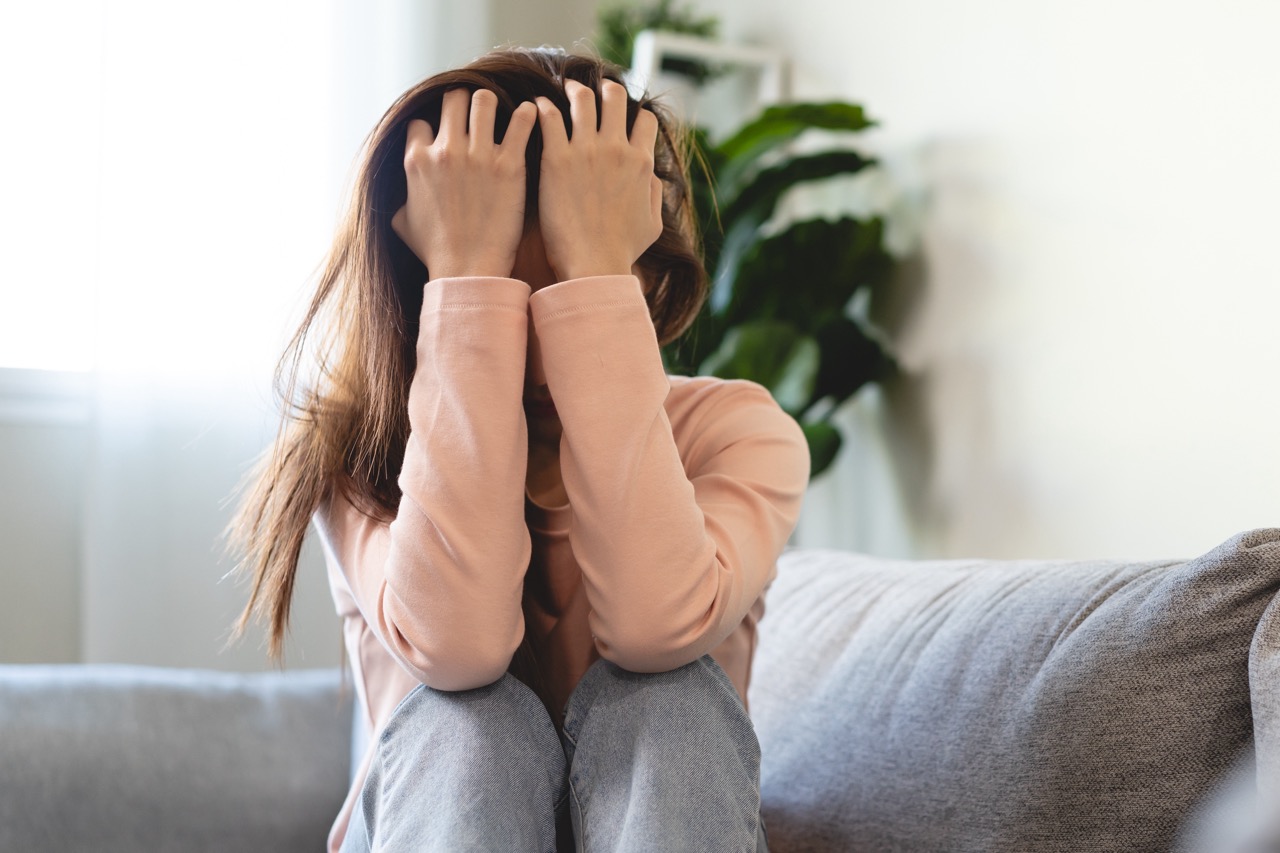Psychotic Disorders
When reality becomes unclear and the mind creates experiences that others can’t see or hear, daily life transforms into something confusing and frightening. Psychotic disorders are mental health conditions where people experience symptoms like hallucinations and delusions that significantly disrupt their connection to reality and cause significant suffering. While these conditions can feel overwhelming, an accurate diagnosis and effective treatment plan can help people regain stability and rebuild meaningful lives.

Understanding Psychotic Disorders
Psychotic disorders are mental health conditions where people experience breaks from reality or moments when the mind creates experiences that feel completely real but aren’t happening. Mental health professionals group these conditions together in the Diagnostic and Statistical Manual of Mental Disorders (DSM-5-TR) under “Schizophrenia Spectrum and Other Psychotic Disorders” because while they share similar features, each has its unique characteristics [1].
The heart of these conditions involves what clinicians call psychotic symptoms, which are changes in how someone’s brain processes the world around them. The two most common types of psychotic symptoms are:
- Hallucinations: When people see, hear, or feel things that others can’t
- Delusions: Beliefs that feel true to the person but don’t match reality, and persist when presented with evidence to the contrary
What makes these conditions particularly complex is how differently they affect people. For example, some people experience brief episodes that come and go within days or weeks, almost like a storm that passes through.
Others, however, face ongoing challenges that require consistent support and management, similar to how someone might manage diabetes or another chronic condition. The impact on daily life varies just as much. Some people continue working and maintaining relationships with the proper treatment, while others need more intensive support.
It’s important to realize, though, that psychotic disorders don’t have to define someone’s entire future. Rather than being permanent roadblocks, psychotic disorders often respond remarkably well to treatment, giving people the tools to manage their symptoms and work toward their personal goals. When treatment starts early, people typically see better outcomes and recover more quickly.
Major Types of Psychotic Disorders
Several distinct conditions fall under the psychotic disorders category, each with specific characteristics and treatment approaches.
Schizophrenia
Schizophrenia is the most well-known psychotic disorder, typically requiring long-term management. To be diagnosed with schizophrenia, people must experience symptoms for at least six months, including hallucinations, delusions, disorganized thinking and speech, unusual behaviors, and reduced emotional expression or social engagement [2].
Unfortunately, many people with schizophrenia lack insight into their condition, meaning they don’t recognize they’re experiencing symptoms. This can make treatment challenging at first, but with proper support, most people learn to identify and then manage their symptoms successfully.
Schizoaffective Disorder
Schizoaffective disorder combines psychotic symptoms with significant mood episodes, such as depression, mania, or both. What distinguishes schizoaffective disorder from other psychotic disorders is that psychotic symptoms must occur for at least two weeks with mood symptoms present [3].
During manic episodes, people might feel euphoric, need less sleep, or experience grandiosity. On the contrary, depressive episodes involve low mood, sleep disturbances, loss of interest in activities, and feelings of worthlessness.
Brief and Time-Limited Disorders
Schizophreniform disorder involves the same symptoms as schizophrenia but lasts for a shorter duration, usually between one and six months. If symptoms persist beyond six months, the diagnosis may change to schizophrenia [1].
Brief psychotic disorder features at least one psychotic symptom lasting between one day and one month, with people returning to their normal functioning afterward [1].
Delusional disorder involves persistent delusions for at least one month without other significant psychotic symptoms, and people generally maintain normal functioning in most areas of life [1].
Causes and Risk Factors
Understanding what causes psychotic disorders is like putting together a complex puzzle with many interconnected pieces. These conditions develop through many different factors, all working together to create the disorder. Rarely does a psychotic disorder have one single cause.
Family history plays an essential role in determining risk. For example, having a close relative with a psychotic disorder increases someone’s chances of developing one as well. However, many people with these conditions have no family history, which shows that genetics alone doesn’t determine who will be affected [4].
Life circumstances and experiences also influence risk in significant ways. For example, people living in urban areas, those facing financial hardship, or those dealing with discrimination tend to have a higher risk of developing psychotic disorders. Early and heavy use of substances like cannabis or alcohol also adds another layer to this risk. Difficult childhood experiences such as bullying, abuse, or trauma can also increase the likelihood of developing these disorders later in life [4].
All of these risk factors typically don’t work in isolation. Instead, they tend to build up and interact with each other, creating different combinations of symptoms and challenges for different people. For example, some people may have several risk factors but never develop a psychotic disorder, while others with fewer factors do. Understanding these patterns helps healthcare providers and families recognize warning signs early and provide support before challenges become more serious.
Diagnosing Psychotic Disorders
Getting the correct diagnosis can be challenging because symptoms of psychotic disorders often mirror other mental health conditions. It’s almost like trying to identify what’s wrong with a car when several different problems could cause the same warning light to appear.
Mental health professionals start the diagnostic process by learning about someone’s personal and family medical history, looking for patterns or previous diagnoses that help them understand what the patient is experiencing. They also conduct thorough physical exams to rule out other potential causes of the symptoms, such as a brain injury or underlying medical condition. Sometimes, this stage includes brain scans, like an MRI or CT scan, to rule out other issues [5].
During mental health evaluations, professionals also ask questions about how someone thinks, feels, and behaves daily. They try to learn as much as possible about specific symptoms and how these experiences affect every aspect of someone’s personal and professional life [2].
In addition to learning more about the patient’s personal experiences and habits, the diagnostic process relies on specific criteria from the DSM-5-TR to tell different psychotic disorders apart [1]. Key questions mental health professionals ask include how long symptoms have been present, whether the person has also experienced depression or mania, if they have any other medical conditions, and whether medications or substances could be playing a role [5].
This careful, step-by-step approach helps ensure people get an individual treatment plan designed for their specific condition, rather than a one-size-fits-all approach that might not work as well.
How Psychotic Disorders Are Treated
Effective treatment for psychotic disorders works best when medication and therapy are combined and are tailored to fit each person’s unique situation and needs.
Medication typically serves as the first line of treatment. Doctors often start with antipsychotic medications like risperidone, quetiapine, olanzapine, or aripiprazole as their main approach [2]. Depending on the specific condition, additional medications such as antidepressants, mood stabilizers, or anti-anxiety medications might work alongside the primary treatment [6]. Finding the right combination often takes time and patience, as people respond differently to various options.
Therapy plays an equally important role in recovery. For example, cognitive behavioral therapy teaches practical skills for managing difficult emotions and changing unhelpful thought patterns [2]. Family therapy brings loved ones into the process, helping them understand the condition better while improving communication and support [6]. Likewise, psychosocial rehabilitation focuses on rebuilding everyday life skills through work with social workers or occupational therapists.
Sometimes hospitalization becomes necessary when symptoms pose safety risks to the patient or those around them. When this happens, the focus stays on getting symptoms under control so the person can return to their community and support system as soon as it’s safe to do so [6].
Achieving Recovery and Stability
The most important thing to understand about psychotic disorders is that they are treatable. Every day, people with these mental health challenges build meaningful careers, maintain loving relationships, and pursue dreams that matter to them.
While psychotic disorders bring real difficulties that shouldn’t be ignored or minimized, they don’t determine someone’s worth or limit what they can achieve in life. Recovery, which is very possible, takes many different forms, and with the right mix of treatment and support, people can and do get better.
Getting help early makes a tremendous difference in how quickly someone recovers from a psychotic disorder and how well they do over time. Therapeutic advances mean that people facing psychotic disorders today have more effective treatment options than any previous generation. These aren’t just medical treatments either, but pathways back to the life someone wants to live, complete with hopes, goals, and the possibility of genuine happiness.
- American Psychiatric Association. (2022). Diagnostic and statistical manual of mental disorders (5th ed., text rev.). https://doi.org/10.1176/appi.books.9780890425787.
- National Alliance on Mental Illness (NAMI). (n.d). Schizophrenia. NAMI. https://www.nami.org/About-Mental-Illness/Mental-Health-Conditions/Schizophrenia.
- National Alliance on Mental Illness (NAMI). (n.d). Schizoaffective Disorder. NAMI. https://www.nami.org/About-Mental-Illness/Mental-Health-Conditions/Schizoaffective-Disorder/Overview.
- Radua, J., Ramella-Cravaro, V., Ioannidis, J.P.A., Reichenberg, A., Phiphopthatsanee, N., Amir, T., Yenn Thoo, H., Oliver, D., Davies, C., Morgan, C., McGuire, P., Murray, R.M., & Fusar-Poli, P. (2018). What Causes Psychosis? An Umbrella Review of Risk and Protective Factors. World Psychiatry: Official Journal of the World Psychiatric Association (WPA), 17(1), 49-66. https://doi.org/10.1002/wps.20490.
- Stephen, A. & Lui F. (2022). Brief Psychotic Disorder. In StatPearls [Internet]. Treasure Island, FL: StatPearls Publishing. https://www.ncbi.nlm.nih.gov/books/NBK539912/.
- National Health Service. (Reviewed 2019). Treatment – Psychosis. NHS. https://www.nhs.uk/mental-health/conditions/psychosis/treatment/.
The Clinical Affairs Team at MentalHealth.com is a dedicated group of medical professionals with diverse and extensive clinical experience. They actively contribute to the development of content, products, and services, and meticulously review all medical material before publication to ensure accuracy and alignment with current research and conversations in mental health. For more information, please visit the Editorial Policy.
MentalHealth.com is a health technology company guiding people towards self-understanding and connection. The platform provides reliable resources, accessible services, and nurturing communities. Its purpose is to educate, support, and empower people in their pursuit of well-being.
Briana Casali, Ph.D. is an experienced editor and professional writer with a background in academic editing and journalism for high-growth organizations.
Shivani Kharod, Ph.D. is a medical reviewer with over 10 years of experience in delivering scientifically accurate health content.
The Clinical Affairs Team at MentalHealth.com is a dedicated group of medical professionals with diverse and extensive clinical experience. They actively contribute to the development of content, products, and services, and meticulously review all medical material before publication to ensure accuracy and alignment with current research and conversations in mental health. For more information, please visit the Editorial Policy.
MentalHealth.com is a health technology company guiding people towards self-understanding and connection. The platform provides reliable resources, accessible services, and nurturing communities. Its purpose is to educate, support, and empower people in their pursuit of well-being.


